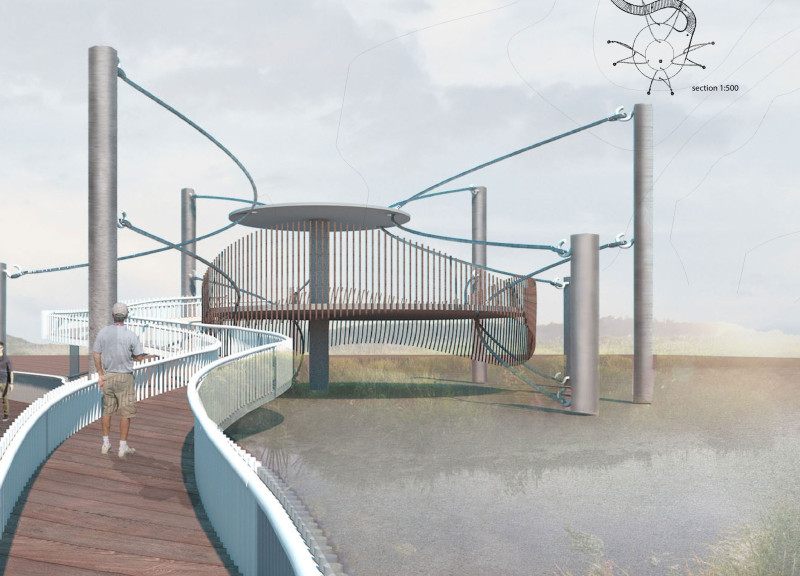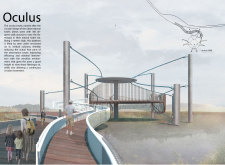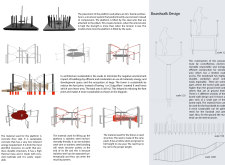5 key facts about this project
Unique Design Approaches
The primary design feature of the Oculus Tower is its tension architecture. This method employs steel cables to support a circular platform, which allows for a lighter structure that minimally disrupts the landscape. The circular design enhances the visitor experience by providing a 360-degree unobstructed view, encouraging individuals to explore the space as they move around the observation deck. The elevated platform’s reduced base size minimizes the ecological footprint, showcasing a commitment to preserving the surrounding wetland environment.
In addition, the project embraces biophilic design principles, creating opportunities for users to connect with nature directly. The structure encourages pauses and moments of observation, fostering an appreciation for the local ecology. Surrounding pathways are designed to blend seamlessly into the natural landscape, featuring indigenous plant species that promote biodiversity and habitat preservation.
Sustainable Material Choices
The Oculus Tower incorporates various sustainable materials, including concrete for the platform’s floor slab, stainless steel for support cables, and natural reed for fencing. These materials were selected not only for their durability but also for their environmental impact. The use of responsibly sourced timber for decking further reinforces the project’s commitment to sustainability. By integrating renewable materials and minimizing the overall footprint, the Oculus Tower sets a precedent for environmentally conscious architectural practices.
The architectural design reflects a thoughtful approach to user experience and ecological responsibility. Visitors are not merely spectators; they become participants in the observation of wildlife, engaging meaningfully with their environment. This dual emphasis on design and ecology distinguishes the Oculus Tower from typical observational structures, generally characterized by larger footprints and less interaction with nature.
To gain more insights into the Oculus Tower, including detailed architectural plans, sections, and design ideas, explore the comprehensive project presentation.


























